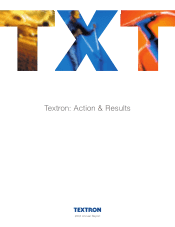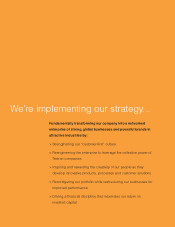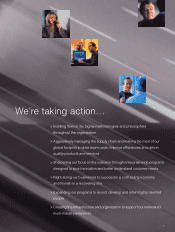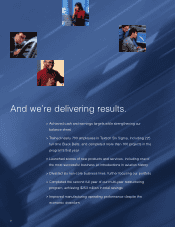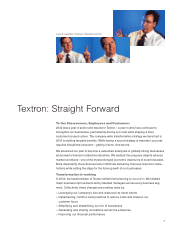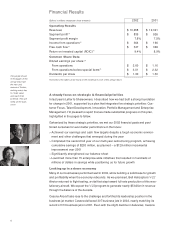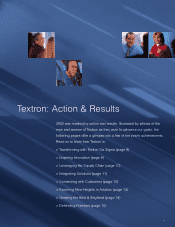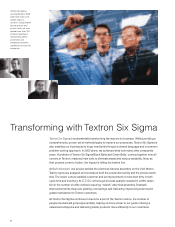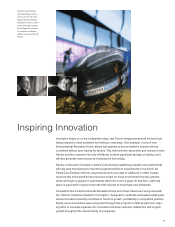E-Z-GO 2002 Annual Report Download - page 7
Download and view the complete annual report
Please find page 7 of the 2002 E-Z-GO annual report below. You can navigate through the pages in the report by either clicking on the pages listed below, or by using the keyword search tool below to find specific information within the annual report.
5
had the highest revenue in its history. In addition, Cessna achieved one of aviation’s
most successful business jet introductions when it unveiled the new Mustang model,
accumulating over 325 orders as this annual report went to press. All told, Cessna
recorded more than 525 jet orders in 2002, including 164 orders for the new CJ3
model, which was also unveiled in 2002. The combined backlog for Bell and Cessna
exceeds $6 billion as we enter 2003.
Making strides and measuring progress
Total revenues for the year, excluding 2001 divestitures, were essentially flat. Growth
was strong at Cessna and in certain other businesses, but was stagnant in our industrial
and financial segments. However, some positive trends emerged. We met our
earnings-per-share target and made progress in increasing our ROIC (return on
invested capital). And, manufacturing profit margins began to show year-over-year
improvements as our cost initiatives gained traction during the second half of the year.
In addition to the obvious economic issues, there were other challenges that we
surmounted to meet our plan in 2002. While Textron Financial’s core businesses per-
formed well, we experienced abnormally high charge-offs in our non-core portfolios,
particularly in telecommunications. In 2003 Textron Financial will continue to refocus on
its core businesses. Our 2002 earnings were also impacted by a supplier component
quality problem that emerged at our Lycoming aircraft engine unit. We launched an
unprecedented Customer Care program and dedicated over $30 million to replace
these specific components and to compensate customers who were affected by the
recalls. Most importantly, we identified the cause of the defects and have instituted
corrective processes and controls. We continue to work with the appropriate regulatory
agencies to ensure the reliability and safety of all engines that may have been affected
by this problem.
Overcoming these challenges only strengthened our commitment to our strategic
priorities and reaffirmed our confidence in reaching these goals by 2006:
>ROIC at least 400 basis points higher than our weighted average cost of capital
>Revenue growth, excluding acquisitions, averaging 5 percent per year
>Segment profit margins greater than 12 percent
>Earnings-per-share growth averaging at least 10 percent per year
Harnessing the power of an $11 billion enterprise
As promised, we deployed Textron Six Sigma across the company in 2002. Textron Six
Sigma is a proven set of tools and processes aimed at reducing variability, eliminating
waste and developing products and services that are precisely aligned with customer
needs.
The certified, full-time leaders of Textron Six Sigma projects are called “Black Belts.”
In less than a year, we trained over 225 Black Belts who completed more than 100
projects. Based on savings generated by these projects, we have already recovered
our initial investment in deploying Textron Six Sigma. This was an industry-leading Six
Sigma launch, by any measure.

